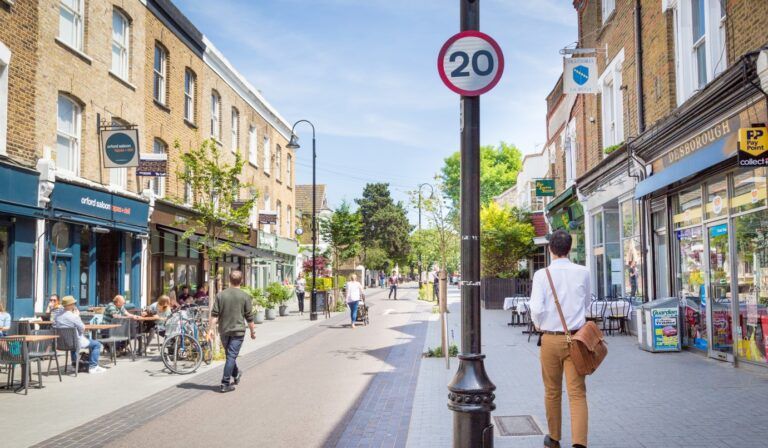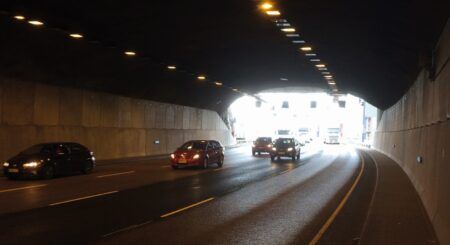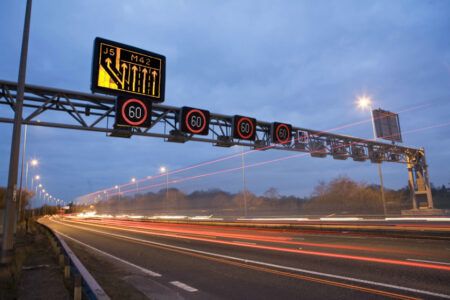New Transport for London (TfL) data has revealed that the drop in the number of people killed on roads in London over the past decade is four times greater than the rest of the country, but urgent action is still needed to reduce fatality figures further, TfL noted.
The data comes from TfL’s 2023 Casualties in Greater London report, which shows that when comparing 2023 data with the 2010-14 baseline, fatalities have reduced by 30% (from 136 to 95) in London compared to 7% for the rest of Great Britain (from 1,663 to 1,550), and serious injuries have decreased by 24% (from 4,734 to 3,615), compared to a 13% decrease (from 28,007 to 24,383), respectively.
However, 95 people were tragically killed on London’s roads, with devastating consequences for the families, friends and communities impacted by these deaths and life-changing injuries.
Urgent action is still needed, noted TfL, with the authority committed to working closely with London’s boroughs, the police and other partners to carry out the work needed to reduce danger on London’s roads for everyone.
In total, the number of people tragically killed or seriously injured on London’s roads in both inner and outer London in 2023 fell by 6% compared to 2022, from 3,961 to 3,710.
Compared to the 2010-14 baseline, nearly all London boroughs have seen a decrease in the number of people killed or seriously injured. Islington has achieved the largest decrease in inner London (from 175 to 98) at 44%, and Waltham Forest has achieved the largest decrease in outer London (from 119 to 63) at 47%.
Last year was also the lowest year on record for fatalities in the capital, excluding 2021, which was heavily affected by pandemic-related lockdowns and changes in travel patterns. This marks important progress towards the Mayor’s Vision Zero goal of eliminating death and serious injury from London’s streets by 2041.
The report also revealed the likelihood of being killed or injured on London’s roads by mode of transport. Motorcyclists were 15 times more likely to be killed on London’s roads in a collision in 2022, per journey, than the average for all listed transport modes. This equates to one motorcyclist killed for every 5.6 million motorcycle journeys, a fatality risk rate of 0.18 per million journeys.
The two next highest fatality risk modes are pedestrians (one pedestrian killed for every 60 million pedestrian journeys, a rate of 0.017) and cyclists (one cyclist killed for every 62 million cyclist journeys, a rate of 0.016).
By contrast bus or coach occupants are the least at risk of being killed, with one bus or coach passenger killed for every 867 million bus/coach occupant journeys in 2022 (a rate of 0.001).
However, the risk of a motorcyclist being killed on London’s roads is now less than half of what it was compared to the 2010-2014 baseline period (from 0.40 to 0.18 per million journeys). The number of people killed while cycling has also fallen by 40% against the 2010-14 baseline, from 13 to eight. Data shows that cycling journeys have continued to increase with the number of daily cycle journeys increasing to 1.26 million in 2023, up by 6.3% since 2022 from 1.18 million.
Cars continued to be the vehicle type most frequently involved in a fatal collision (43 out of the 94 fatal collisions). Speeding remains one of the biggest risks to road users, with around half of the 2023 fatal collisions in London reporting speed as a contributory factor.
TfL continues to work on lowering speeds across London, and last year lowered the speed limit on selected roads in 14 boroughs, exceeding its target to lower the speed limit on 140km of roads by March 2024. There are now 264km of TfL roads that are subject to a 20mph speed limit.
Lilli Matson, TfL’s chief safety, health and environment Officer said, “It’s encouraging to see that we’re making real progress in London to achieve our Vision Zero goal of eliminating death and serious injury from the transport network. However, we know there is much more work to do to achieve this goal. It’s important that we continue to work together with all our partners to incorporate road safety into every decision we make as without safe streets we know that people won’t choose the most healthy and sustainable modes of transport. Vision Zero is an essential part of building a better London for everyone and we are determined to make London a greener, more sustainable and safer city.”





